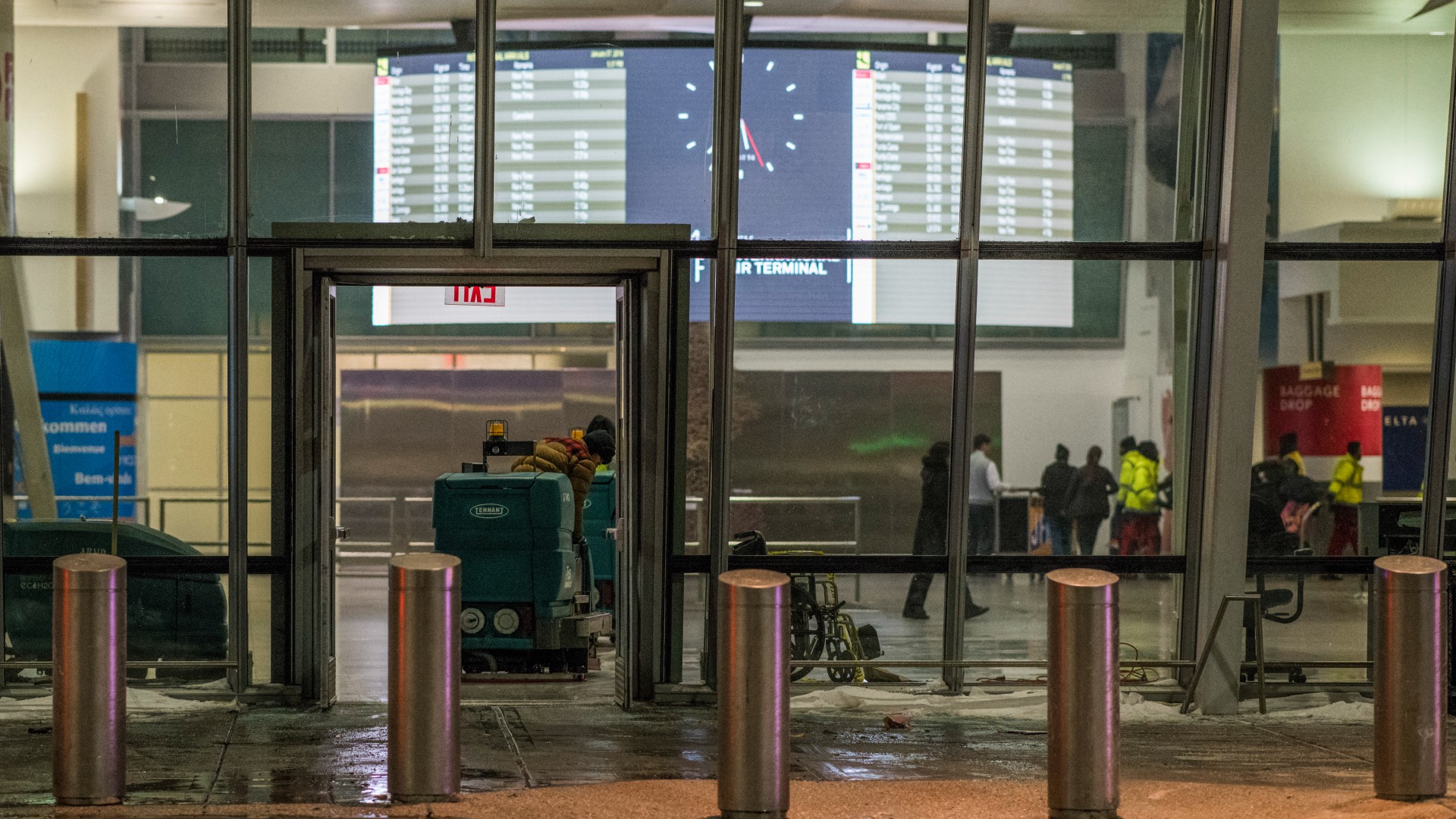International visitors to US decrease by 11 percent in March

The United States is experiencing a downturn in international visitors as the volatile political landscape, fears of being stopped at the border, and a strong dollar may be turning guests away.
Arrival figures from the Department of Commerce’s US National Travel and Tourism Office show a fluctuating landscape, with data varying from month to month this year.
The department’s March figures give the latest complete breakdown by country.
Data shows that overall international visitor numbers for March 2025 were down by 11.4 percent compared to a year ago in March 2024. The overall number of visitors to the US in March was 2.4 million.
However, overseas visitor numbers showed a decrease in March from most parts of the world, compared to the same time last year, including western Europe (17.2 percent), Central America excluding Mexico (23.9 percent), Mexico (23.2 percent), and South America (10.4 percent).
New MEE newsletter: Jerusalem Dispatch
Sign up to get the latest insights and analysis on Israel-Palestine, alongside Turkey Unpacked and other MEE newsletters
Only visitor numbers from the Middle East (17.7 percent) and Eastern Europe (1.5 percent) were up in March, compared to the same time last year.
Visitor numbers are comprised of people who come to the US on tourist, business, study-related, and other non-immigrant visas.
Drilling down into these figures further, the data shows that visitor numbers from the UK and Germany, which rank in the top 20 visitor countries to the US, were down 14.3 percent and 28.2 percent, respectively.
Both countries, incidentally, had their citizens detained by Immigration and Customs Enforcement agents in recent months, and both countries had posted updated travel advisories to the US on their websites.
Tourism visitor numbers from most countries in the Middle East dropped in March, compared to the same time last year, with Lebanon showing the greatest decrease, at 23.7 percent. The increase in visitor numbers overall was skewed by upward trends from Israel (21.1 percent), Cyprus (12 percent) and Turkey (25.4 percent).
While student visa numbers from the Middle East showed a drop of only 0.5 percent overall, certain countries were more impacted than others, such as Iran (25.3 percent) and Lebanon (21.5 percent), compared to the same time last year.
Tourists from South America, Colombia, Ecuador, and Venezuela showed sharp drops of 36.3, 25.9 and 23.3 percent, respectively.
In neighbouring Central America, visitor numbers also showed significant drops from El Salvador (37.7 percent), Honduras (36.9 percent) and Nicaragua (41.7 percent).
Mexico showed a significant drop in visitor numbers in March compared to the same time last year, with a 23.2 percent downturn overall, and a 25.1 percent downturn in tourist visas.
All the countries listed from Central and South America received deportation flights from the US under the Trump administration. In addition, Mexico was initially targeted with high tariffs, which sparked backlash from the country.
Data on visitors from Canada was only available for January and February from the Department of Commerce. Preliminary data shows visitor numbers decreased in January by 8.1 percent to 1.4 million from the year prior, and in February by 9.8 percent to 2.7 million, but it doesn’t show figures for the last two months.
Tensions between the two countries escalated this year after President Donald Trump suggested that Canada should become the 51st American state, triggering a trade war.
Downturn in spending
According to an article by Reuters on Thursday about the decline in travel spending in the United States, the World Travel and Tourism Council (WTCC) said that travel from Canada and Mexico - two countries with some of the highest visitor numbers to the US - was down around 20 percent year-over-year.
WTCC said that unpopular government policies, fear of being stopped and deported at the border, and a strong US dollar were all contributing to a decline in international visitors.
Julia Simpson, CEO of the WTTC, told Reuters that despite the US being the largest global travel and tourism economy, international visitor spending in the country is projected to fall under $169bn in 2025, down from $181bn in 2024 and 22 percent below its previous peak in 2019.
New York, the most visited state in the US, will also see international visitor numbers fall this year. According to research provided by Tourism Economics, an Oxford Economics company, international visitor numbers to the city in 2025 are expected to fall from an expected 14.1 million visitors to 12.1 million.
Julie Coker, the CEO of New York City Tourism + Conventions, shared a statement with Middle East Eye, saying, “Although international visitors make up 20% of total visitation, they account for approximately 50 percent of all visitor spending, making them essential to New York City’s economy."
“Combined, this downward revision represents an estimated loss of over $4 billion in direct spending,” Coker said.
She said the organisation was planning to roll out a travel campaign that features the Statue of Liberty as a symbol in 17 countries and would focus outreach in Canada, Mexico, western Europe, Latin America, the Middle East, and Asia Pacific.
Early data from the US National Travel and Tourism Office showed that while international travel to the US fell 11.4 percent overall, compared to this time last year, there was an eight percent increase in April, which may have shown a spike from visitors travelling over the Easter holidays.
middleeasteye.net